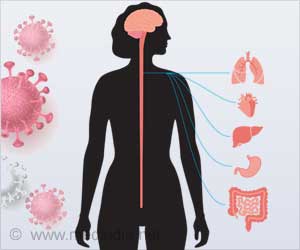Are you at risk of developing long covid? Take a simple blood test using an artificial intelligence (AI) algorithm at the time of COVID-19 infection.
- Long Covid is the name given to ongoing symptoms that are reported after suffering from COVID-19 infection
- There are hopes that a diagnostic test could soon be developed to tell people if they will have the condition
- A new simple blood test using artificial intelligence (AI) showcasing the changes in blood proteins, will give answers to this hope
How Does Artificial Intelligence Help to Identify Long COVID?
In this study, researchers analyzed proteins in the blood of healthcare workers infected with COVID-19, and compared them to samples from healthcare workers who had not been infected.If these findings are repeated in a larger, independent group of patients, a test could potentially be offered alongside a polymerase chain reaction (PCR) test that could predict people’s likelihood of developing long COVID.
Even mild or asymptomatic COVID-19 disrupts the profile of proteins in our blood plasma. This means that even mild COVID-19 affects normal biological processes dramatically, up to at least six weeks after infection.
Does Long COVID Show Up in Blood Tests?
For the study, researchers analyzed blood plasma samples from 54 healthcare workers who had PCR- or antibody-confirmed infection, taken every week for six weeks in spring 2020, and compared them to samples taken over the same period from 102 healthcare workers who were not infected.They used targeted mass spectrometry, a form of analysis that is extremely sensitive to tiny changes in the number of proteins in blood plasma, to look at how COVID-19 affected these proteins over six weeks.
They found abnormally high levels of 12 proteins out of the 91 studied among those infected by SARS-CoV-2, and that the degree of abnormality tracked with the severity of symptoms.
A machine learning algorithm, trained on the protein profiles of the participants, was able to distinguish all of the 11 healthcare workers who reported at least one persistent symptom at one year, from infected healthcare workers who did not report persistent symptoms after a year. Another machine learning tool was used to estimate the likelihood of error and suggested a possible error rate of 6% for this method.
Identifying people who are likely to develop long COVID, opens the door to trialing treatments such as antivirals at this earlier, initial infection stage, to see if it can reduce the risk of later long COVID.
References:
- Mandal S, Barnett J, Brill SE ARC Study Group, et al. Long-COVID: a cross-sectional study of persisting symptoms, biomarker and imaging abnormalities following hospitalization for COVID-19Thorax 2021. .(https://thorax.bmj.com/content/76/4/396)
- Davis, Hannah E. et al. Characterizing long COVID in an international cohort: 7 months of symptoms and their impact. eClinicalMedicine. August 2021.(https://www.thelancet.com/journals/eclinm/article/PIIS2589-5370(21)00299-6/fulltext)
Source-Medindia
















